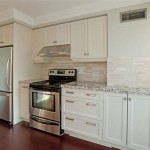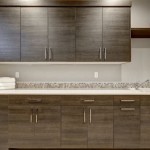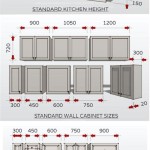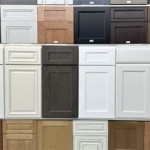Green Kitchen Cabinet Paint: A Comprehensive Guide
Green kitchen cabinet paint has surged in popularity as homeowners seek to infuse their kitchens with natural serenity and a touch of modern style. This color choice transcends fleeting trends, offering a versatile backdrop that complements a wide array of design aesthetics, from rustic farmhouse to sleek contemporary. Selecting the right shade of green, understanding the intricacies of paint types, and mastering the preparation and application process are crucial for achieving a professional and long-lasting finish.
The allure of green stems from its inherent connection to nature, evoking feelings of calmness, growth, and renewal. In a space as central to the home as the kitchen, these qualities can be incredibly beneficial, fostering a welcoming and comfortable atmosphere. Beyond its psychological benefits, green's adaptability makes it a smart design choice. It pairs well with various countertop materials, hardware finishes, and backsplash designs, allowing for a high degree of personalization.
Selecting the Perfect Shade of Green
Navigating the spectrum of green paint shades can feel overwhelming. The key lies in considering the existing elements of the kitchen and the desired overall ambiance. Light greens, such as sage, mint, and seafoam, are excellent choices for smaller kitchens, as they reflect light and create an illusion of spaciousness. These lighter shades also lend themselves well to cottagecore and Scandinavian-inspired designs, promoting a clean and airy feel.
For kitchens with ample natural light, darker shades of green, like forest green, emerald, and hunter green, can add depth and sophistication. These richer tones work particularly well in traditional and transitional kitchens, providing a grounding and luxurious feel. Pairing darker greens with metallic hardware, like brass or copper, can further enhance their opulent appeal. It's essential to consider the undertones of the green paint. Some greens lean towards a warmer, yellow-based hue, while others have cooler, blue-based undertones. Matching the undertones of the green paint with the existing elements of the kitchen, such as flooring and countertops, ensures a cohesive and harmonious design.
Consider the lighting in the kitchen at different times of the day. Natural light will impact the appearance of the paint color significantly, as will artificial lighting. It's recommended to obtain paint samples and observe them in the kitchen under various lighting conditions before making a final decision. Paint color apps and online visualizers can be helpful for visualizing different shades of green in the space, although they should be supplemented with real-life samples for accurate color representation.
Understanding Paint Types and Finishes
The type of paint and finish chosen for kitchen cabinets directly impacts their durability, cleanability, and overall appearance. Acrylic latex paint is a popular choice for kitchen cabinets due to its low VOC (volatile organic compounds) content, durability, and ease of application. Alkyd paint, also known as oil-based paint, offers exceptional durability and a smooth, enamel-like finish, but it typically has higher VOC content and requires mineral spirits for cleanup. Hybrid paints that combine the benefits of both acrylic and alkyd paints are also available, providing a balance of durability, low VOC content, and ease of use.
The finish of the paint refers to its sheen level, which affects how much light it reflects. High-gloss finishes are the most reflective and easiest to clean, making them suitable for high-traffic areas like kitchens. However, high-gloss finishes also tend to highlight imperfections in the cabinet surface. Semi-gloss finishes offer a good balance of durability and cleanability without being overly reflective. Satin finishes provide a softer, less reflective sheen and are a popular choice for kitchen cabinets as they hide imperfections well while still being relatively easy to clean. Matte finishes have the least amount of sheen and offer a sophisticated, velvety look. However, matte finishes are generally less durable and more difficult to clean than higher-sheen options.
For kitchen cabinets, a semi-gloss or satin finish is generally recommended. These finishes offer a good balance of durability, cleanability, and aesthetic appeal. Consider the existing hardware and overall design style when choosing the paint finish. For example, a high-gloss finish might complement a modern kitchen with sleek hardware, while a satin finish might be more appropriate for a traditional kitchen with more ornate details.
Preparation and Application Techniques
Proper preparation is crucial for achieving a professional and long-lasting paint finish on kitchen cabinets. This process involves several key steps, including cleaning, sanding, priming, and patching any imperfections. Begin by removing all hardware, such as knobs, pulls, and hinges. Thoroughly clean the cabinet surfaces with a degreasing cleaner to remove any dirt, grease, or grime. Rinse with clean water and allow the cabinets to dry completely.
Sanding the cabinet surfaces creates a slightly rough texture that allows the primer and paint to adhere properly. Use a medium-grit sandpaper (around 120-grit) to lightly sand the surfaces, paying particular attention to any glossy areas or existing paint. Wipe away any sanding dust with a tack cloth. Apply a high-quality primer specifically designed for cabinets. Primer helps to seal the surface, block stains, and provide a uniform base for the paint. Allow the primer to dry completely according to the manufacturer's instructions.
Inspect the cabinets for any imperfections, such as dents, scratches, or holes. Fill these imperfections with wood filler and allow it to dry completely. Sand the filled areas smooth and prime them before painting. Choose the appropriate application method based on the paint type and desired finish. Brushing and rolling are common methods for painting kitchen cabinets. When using a brush, opt for a high-quality synthetic brush designed for smooth finishes. When using a roller, choose a foam roller or a short-nap roller to minimize stippling. Spraying provides the smoothest and most professional finish, but it requires specialized equipment and proper ventilation. Apply thin, even coats of paint, allowing each coat to dry completely before applying the next. Two or three coats of paint are typically required for optimal coverage and durability.
Between coats, lightly sand the cabinet surfaces with fine-grit sandpaper (around 220-grit) to remove any imperfections or drips. Wipe away any sanding dust before applying the next coat of paint. Once the final coat of paint has dried completely, reattach the hardware. Consider using new hardware to update the look of the kitchen and complement the green cabinet paint. Ensure proper ventilation during the painting process to minimize exposure to paint fumes. Wear appropriate safety gear, such as a respirator, gloves, and eye protection.
Considering the existing elements of the kitchen, such as countertops, backsplashes, and flooring, is crucial for achieving a cohesive and harmonious design. Green cabinets pair well with a variety of countertop materials, including granite, quartz, marble, and butcher block. Light-colored countertops, such as white or cream, can create a bright and airy feel, while darker countertops, such as black or gray, can add contrast and drama. Backsplashes offer another opportunity to add personality and visual interest to the kitchen. Consider using subway tiles, mosaic tiles, or natural stone to complement the green cabinets.
Flooring options should also be considered when designing a green kitchen. Hardwood floors in light or medium tones can create a warm and inviting feel, while tile floors in neutral colors can provide a clean and modern look. The hardware chosen for the cabinets can also significantly impact the overall aesthetic. Brass, copper, and gold hardware can add warmth and elegance, while stainless steel or black hardware can create a more contemporary feel. Ultimately, the goal is to create a kitchen that is both visually appealing and functional, reflecting the homeowner's personal style and needs.
Maintenance is crucial for preserving the beauty and longevity of green kitchen cabinets. Regularly wipe down the cabinets with a damp cloth to remove any dirt, grease, or spills. Avoid using harsh chemicals or abrasive cleaners, as they can damage the paint finish. For stubborn stains, use a mild soap and water solution. Consider applying a protective sealant or topcoat to the cabinets to provide extra protection against scratches, stains, and moisture. This is particularly important for cabinets in high-traffic areas or near the sink.
Inspect the cabinets periodically for any signs of wear and tear, such as chips, scratches, or peeling paint. Touch up any damaged areas with matching paint to prevent further damage. By following these simple maintenance tips, homeowners can ensure that their green kitchen cabinets remain beautiful and functional for years to come. Remember that the choice of green paint for kitchen cabinets is a long-term investment, so careful planning, proper preparation, and ongoing maintenance are essential for maximizing its value and enjoyment.

14 Green Kitchen Cabinet Ideas 2024 Top Paint Colors For Kitchens

Green Kitchen Cabinet Inspiration Best Paint Colors Farmhouse Living

14 Green Kitchen Cabinet Ideas 2024 Top Paint Colors For Kitchens

Best Green Paint Colors For Kitchen Cabinets So Much Better With Age

The Allure Of A Green Kitchen Make Mine Spritzer

Green Kitchen Cabinet Inspiration Best Paint Colors Farmhouse Living

The Best Green Paint Colors Painted Kitchen Cabinets Cabinet Design

40 Sage Green Kitchen Cabinets With Paint Colors Jenna Sue Design

9 Green Paint Colors To Consider For Your Kitchen

14 Green Kitchen Cabinet Ideas 2024 Top Paint Colors For Kitchens
Related Posts








